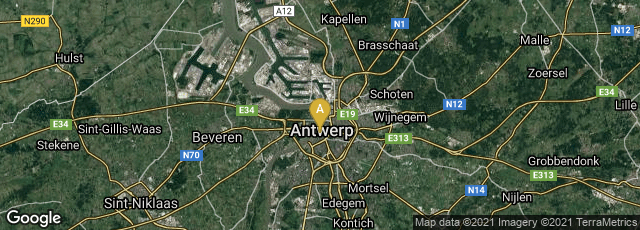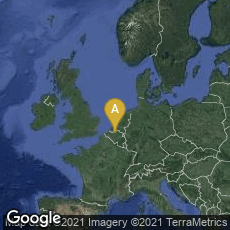

A: Antwerpen, Vlaanderen, Belgium
In 1557 German painter, engraver, and printer Hubert Goltzius, issued a folio volume from the press of Copen (?) Diesthem in Antwerp, Belgium, entitled Lebendige Bilder gar nach all Keyersern, von C. Julio Caesare, bisz auff Carolum.V. und Ferdinandum seinem Bruder, auxz den alten Medalien . . . . Goltzius also issued this book in Latin and Italian in 1557, in French in 1559, and in Spanish in 1560. Besides illustrating medallic portraits of Roman emperors, Goltzius provided histories of their reigns. According to the Wikipedia, Golzius worked on this book for 12 years before it was published.
"Although the chiaroscuro woodcut was primarily a technique for making individual prints in imitation of drawings, it was occasionally used for book illustration. Hubert Goltzius, a pioneering numismatist, employed it to reproduce antique medals bearing portraits of the Roman emperors. . . .That book. . . was one of the earliest uses of chiaroscuro in a book and the first use of the technique in the Netherlands.
"The chiaroscuro process, with its different shades of the same hue and white highlights, defines light and tone but not local color; it was thus especiately appropriate for the reproduction of monochrome relief medals. One of the characteristics of Goltzius's work, the use of an etched plate for the black outlines and details, had earlier been invented by Parmagianino, but was not widely adopted by practioneers of chiaroscuro active in the sixteenth century. . . ." (Friedman, Color Printing in England 1487-1870 [1978] No. 2).
Strauss, Chiaroscuro. The Clair-Obscur Woodcuts by the German and Netherlandish Masters of the XVIth and XVIIth Centuries (1973) No. 113.